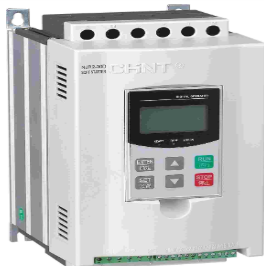How to use a multimeter to measure the quality of a frequency converter
 To measure the quality of a frequency converter using a multimeter, it is necessary to detect its key circuits (rectification, inversion, capacitors, control power supply, etc.) step by step. The following are the specific methods and precautions:
To measure the quality of a frequency converter using a multimeter, it is necessary to detect its key circuits (rectification, inversion, capacitors, control power supply, etc.) step by step. The following are the specific methods and precautions:
1. Power-off Detection (Safety First!)
1. **Discharge Treatment**
Disconnect the power supply of the frequency converter and wait for at least 5 minutes (or use a 200Ω/10W resistor to discharge the DC bus capacitor) to avoid electric shock from residual high voltage.
2. **Detection of the Rectifier Module (Input Side)**
- Set the multimeter to the **diode range**. Connect the red test lead to the positive pole of the DC bus (+, P), and connect the black test lead to the input terminals R, S, and T respectively:
- Normally, it should be **forward-conducting (with a voltage drop of about 0.3-0.7V)**, and reverse-cutoff (displaying OL).
- Connect the red test lead to the negative pole of the DC bus (-, N), and connect the black test lead to R, S, and T:
- Normally, it should be **reverse-cutoff**, and forward-conducting (with the same voltage drop as above).
- **Abnormality Judgment**: If it is both forward-conducting and reverse-conducting or both reverse-cutoff, it indicates that the rectifier diode/bridge stack is damaged.
3. **Detection of the Inverter Module (Output Side)**
- Connect the red test lead to the positive pole of the DC bus (+), and connect the black test lead to the output terminals U, V, and W respectively:
- Normally, it should be **cutoff (OL)** (the anti-parallel diodes of the IGBTs are reverse-cutoff).
- Connect the black test lead to the negative pole of the DC bus (-), and connect the red test lead to U, V, and W:
- Normally, it should be **cutoff (OL)**.
- Connect the red test lead to U, V, and W, and connect the black test lead to the negative pole (-):
- Normally, it should be **forward-conducting (with a voltage drop of about 0.3-0.7V)** (the anti-parallel diodes of the IGBTs are forward-conducting).
- Connect the black test lead to U, V, and W, and connect the red test lead to the positive pole (+):
- Normally, it should be **forward-conducting (with the same voltage drop as above)**.
- **Abnormality Judgment**: If the conduction voltage drop of a certain phase is abnormal (such as 0V or ∞), it may indicate that the IGBT is short-circuited or open-circuited.
4. **Detection of the Electrolytic Capacitor (Filter Circuit)**
- Set the multimeter to the **resistance range (above 200kΩ)**. Connect the test leads to the positive and negative poles of the DC bus:
- Normally, the resistance value should gradually increase from low (the capacitor charging process) and finally stabilize (above several tens of kΩ).
- **Abnormality Judgment**: If the resistance value is always 0Ω (short-circuit), ∞ (open-circuit), or there is no charging phenomenon, the capacitor is damaged.
II. Power-on Detection (Only Recommended for Experienced Operators)
1. **Input Voltage Detection**
- Set the multimeter to the **AC voltage range**. Measure the three-phase voltage of the input terminals R, S, and T (measure two wires for single-phase input). It should be consistent with the nominal value of the power supply (with an error of ±10%).
2. **Control Power Supply Detection**
- Measure the output of the internal switching power supply of the frequency converter (such as 5V, 12V, 24V, etc., refer to the pin definition in the instruction manual):
- Measure with the DC voltage range. A deviation exceeding ±5% may affect the control circuit.
3. **No-load Output Detection (Be Cautious!)**
- Set the frequency converter to **no-load trial operation** (without a motor). After starting, use the **AC voltage range** to measure the output of U, V, and W:
- Under normal circumstances, at a low frequency (such as 5Hz), the voltage should rise linearly with the increase of the frequency (in the V/F control mode), and the three-phase voltage should be balanced (with a deviation of < 5%).
- **Note**: The output voltage of some frequency converters may be unstable under no-load conditions. It is recommended to test with a motor.
III. Other Precautions
1. **Module Protection Circuit**
- If an abnormality is detected in the rectifier/inverter module, it is necessary to further check the drive circuit (such as drive resistors, optocouplers). The multimeter can be used to measure whether there is voltage fluctuation at the drive signal terminals (the resistance values should be the same when the power is off).
2. **Control Circuit Fault**
- If the external wiring is normal but the frequency converter does not respond, it may be a fault in the CPU board or communication circuit. An oscilloscope is needed to detect the signals. It is difficult for a multimeter to directly judge, and it is recommended to use the substitution method or professional maintenance.
3. **Safety Tips**
- Avoid the test leads touching other terminals during measurement. Insulated test leads should be used for the high-voltage part (such as the DC bus).
- The internal circuit of the frequency converter is complex. A multimeter can only detect obvious hardware faults. Minor faults (such as parameter errors, software faults) need to be diagnosed through the operation panel.
IV. Summary
- **Preliminary Judgment**: Detect the conduction and cutoff of the rectifier/inverter module through the diode range, detect the capacitor through the resistance range, and verify the input and output voltages through the voltage range.
- **Abnormality Handling**: If a short-circuit, open-circuit, or abnormal voltage is found, give priority to replacing the module or capacitor; if there is a control circuit fault, it is recommended to contact professional maintenance.
For non-professionals, the detection by a multimeter is only for reference. For complex faults, it is necessary to confirm by combining an oscilloscope, a special tester, or the substitution method to avoid secondary damage caused by blind disassembly.


